Choosing Tips
When buying, it is recommended to consider the size of the room, its lighting, and the style of the interior:
- In a small kitchen, laconic curtains without multi-layered draperies and decorations are most appropriate.
- In typical apartments, the kitchen has only one window, so you should not choose too thick curtains that interfere with natural light.
- What looks good in the store does not always suit the kitchen environment. Curtains should be selected taking into account the style and color scheme of the interior.
- If there is a dining area near the window, long curtains will get in the way and quickly get dirty.
- For the kitchen, translucent curtains or curtains with light filters are often the best solution, since they provide the necessary privacy, but still let in daylight.
- The kitchen is subject to frequent contamination, and is also a source of odors and high humidity, so the functionality and ease of care of curtains in such a room becomes a priority.
- To maximize the kitchen space and fill it with air, designers use an interesting technique, decorating a small window with long floor-length curtains. This makes the ceiling seem higher and the window larger. It is important that the color of the walls matches the color of the frames.
Which material is better to choose?
Due to the purpose of the kitchen, especially if a lot of cooking is done in it, the furniture and decoration should be practical, easy to clean and not absorb odors. The same applies to textiles: if these are curtains made of fabric, it is worth choosing a material that is easy to wash and resistant to dirt.
Natural fabrics are more environmentally friendly than synthetic ones, but they have their drawbacks.
- Cotton holds its shape well and retains its color after washing, but quickly fades in the sun and provides almost no protection from light.
- Linen is durable and noble, but is expensive, fades in the sun and wrinkles easily.
- Silk and wool products are contraindicated in the kitchen, as they quickly absorb dirt and grease, and they must be washed with special care.
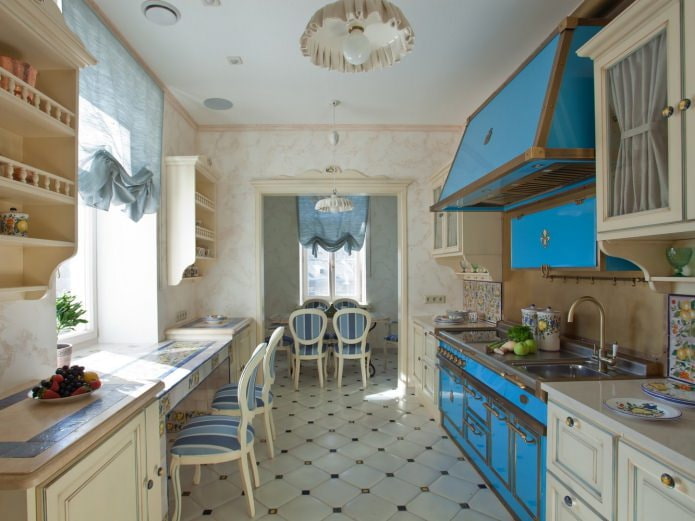
The photo shows a kitchen and dining room, the windows of which are decorated with curtains made of blue cotton.
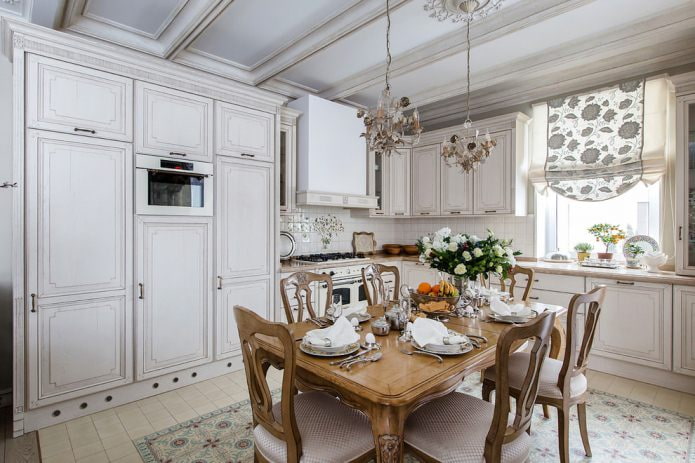

Mixed types of fabrics, when natural fibers are added to synthetics, are the most practical.
- Satin, jacquard and velvet are more suitable for bedrooms and living rooms, as they have a high density and are used for multi-level drapery. In the kitchen, light translucent fabrics are appropriate.
- Thin chiffon is ideal for French and Austrian curtains, organza is more versatile and lets light through well, and mesh or patterned tulle looks great in a duet with thick curtains.
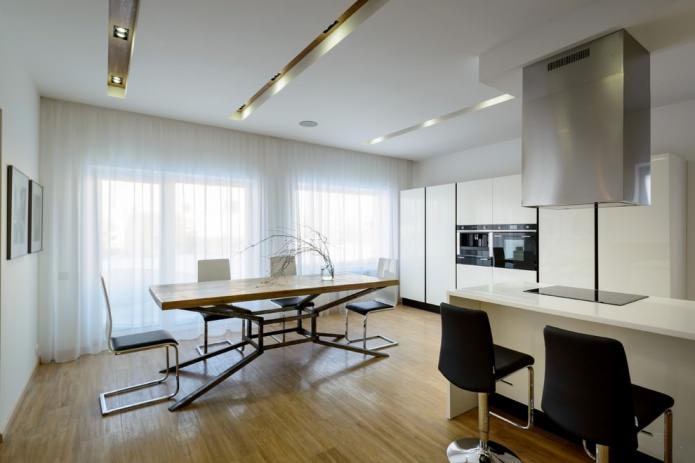


How to choose a fastener?
The type of fastener depends on how often the curtains are opened and closed, as well as on the style of the kitchen. The most practical option for the kitchen is curtains on eyelets (rings sewn into the fabric). They fit perfectly into both modern and classic styles, creating smooth waves.
The most popular solution in most apartments is curtains on rings that are attached to a round cornice. They are durable, easy to gather into picturesque folds and do not require dismantling the entire structure when washing.
For kitchen curtains, the most functional fastening method is loops or hidden tape. With this type of fastening, the curtains can be removed without difficulty. Fasteners in the form of rope or bows look good in a nautical style, as well as in Provence and country.
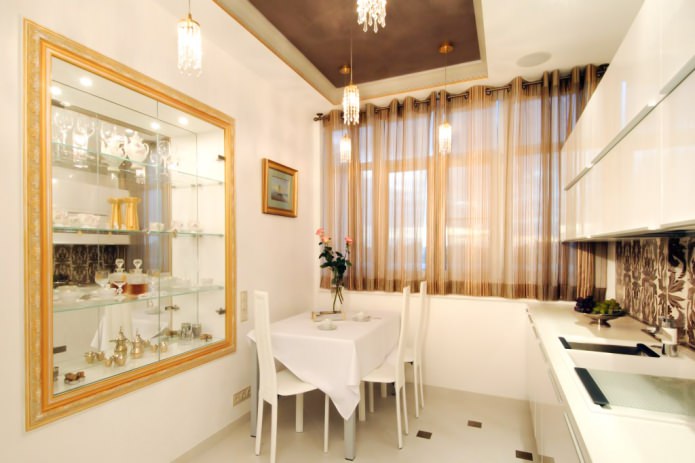

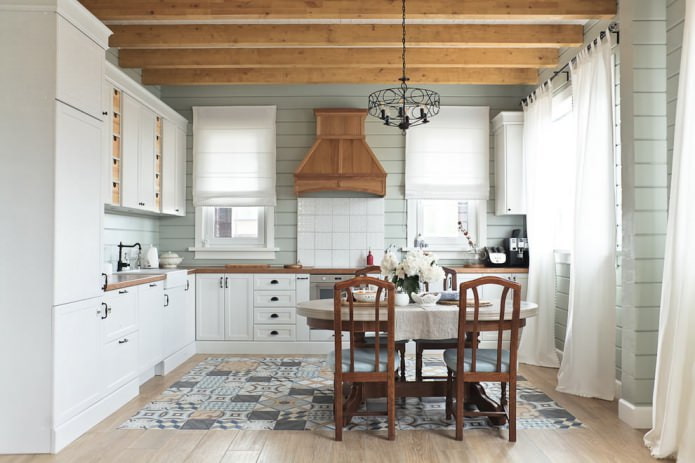
If the curtains often remain stationary, then fasteners that do not require a cornice will do. Mounting is carried out to the ceiling or wall on brackets or special Velcro. Some types of blinds are attached directly to the frame.
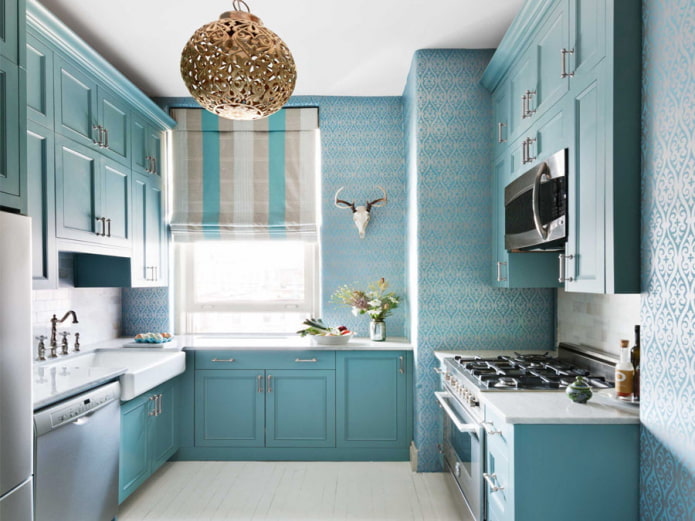
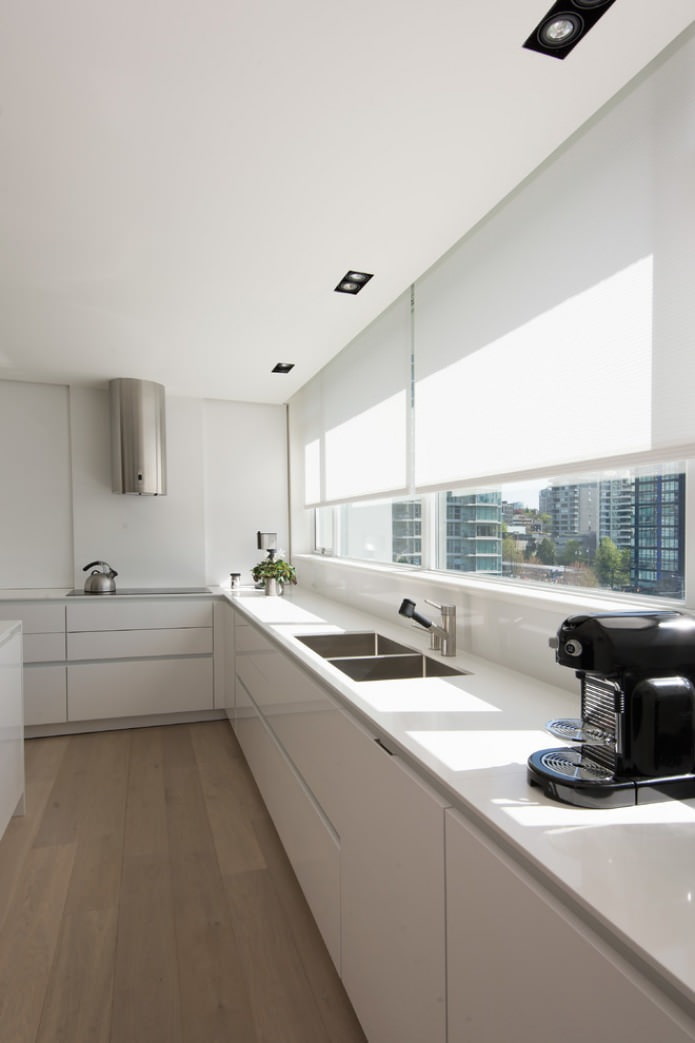
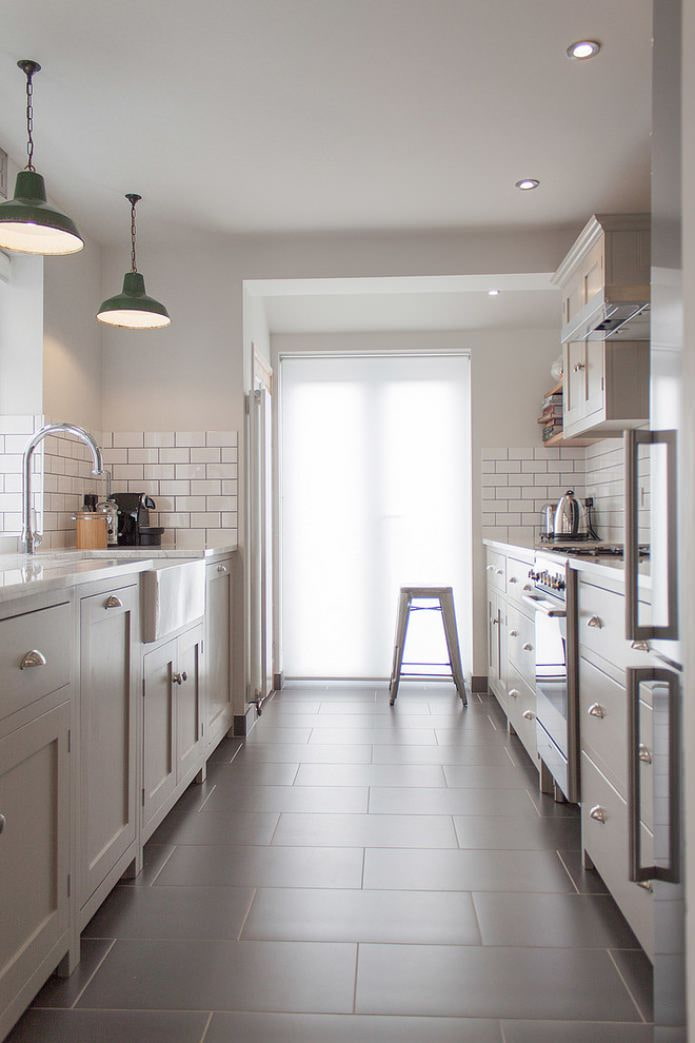
What length is more convenient for the kitchen?
Long curtains look great in spacious kitchens with large window openings. Luxurious classic interiors use floor-length curtains that fall on it in beautiful folds. But in most houses, long curtains are appropriate only when they do not touch the kitchen set, dining furniture and are located far from the gas stove.
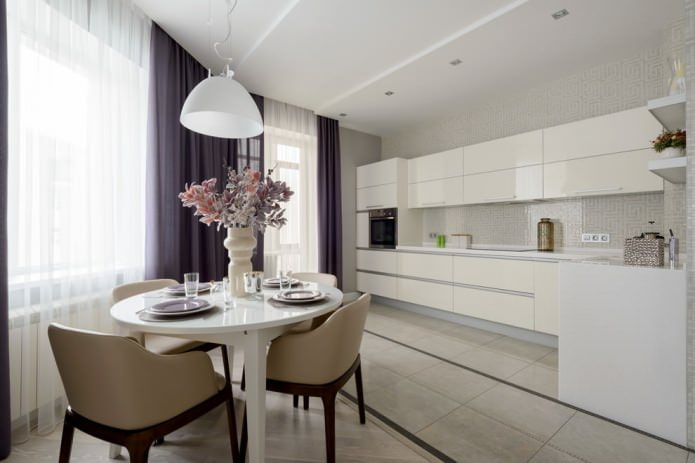
The photo shows a design technique in which the oblique angles of the kitchen are visually softened by long curtains.
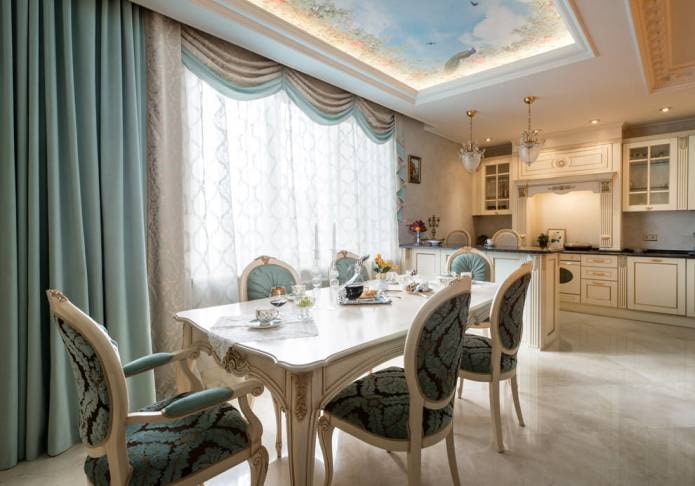

Short curtains are the best option for small rooms: they save space and add coziness to the dining area. They look good in rustic styles, such as country and Provence.

The photo shows a kitchen with short curtains, the color of which echoes the red elements of the furniture.
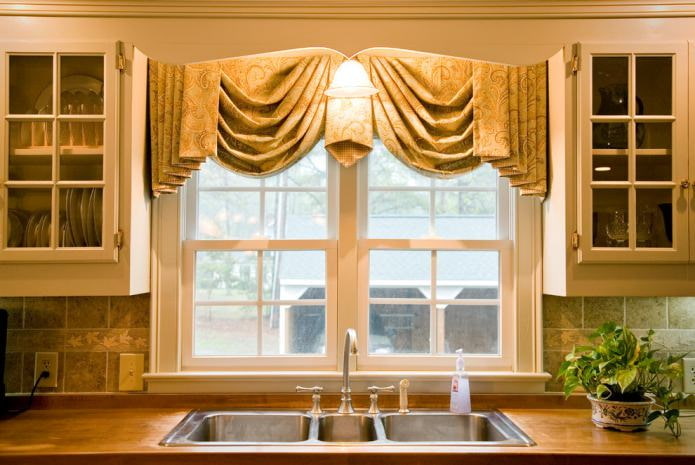
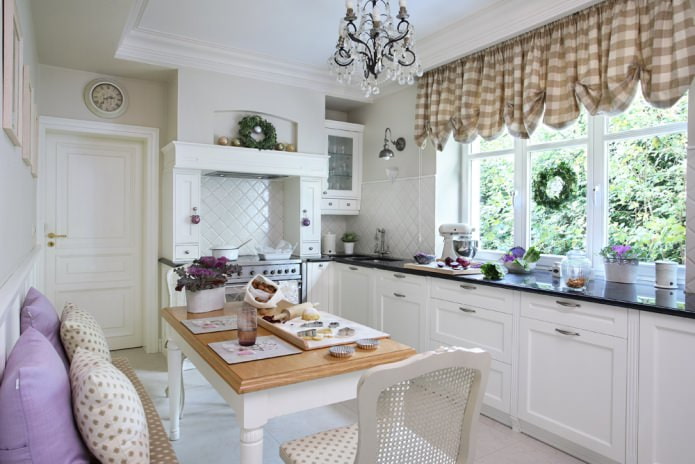
What type of curtains to choose?
The more styles are presented on the market, the more difficult it is to choose the right model. Let’s try to figure out which types of curtains are best suited for the kitchen, and which products are more reasonable to leave for living rooms.
Curtains
A heavy, luxurious canvas made of thick material is not the most practical choice for a room where food is prepared and eaten. If the entire apartment is designed in the Baroque, Art Deco or classical style, it is more appropriate to use French curtains rather than massive canvases. Curtains are difficult to care for, and the fabric folds actively collect dust.

Tulle or curtains
The most common solution that allows you to give the dining area a cozy and lived-in feel. Tulle perfectly hides the kitchen from prying eyes and does not prevent the penetration of natural light, and well-chosen curtains favorably emphasize the interior design.
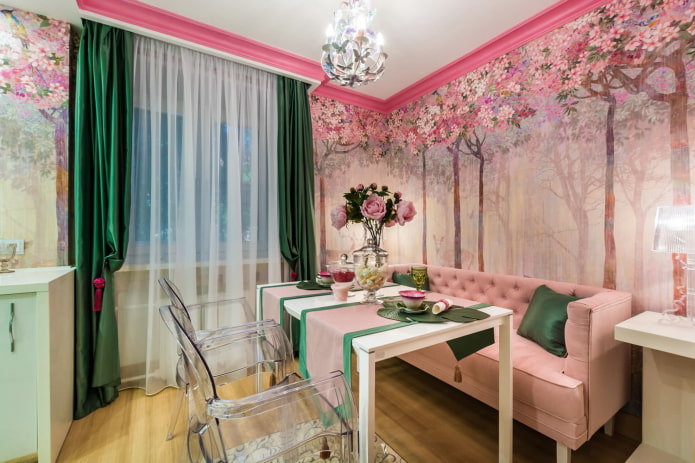
Roman blinds
Picturesque products suitable for both laconic and sophisticated settings. They have uniform folds, are attached to the window opening, covering its upper part and leaving the window sill free. To wash the fabric, remove it from the lifting mechanism.
See examples of kitchen window decoration.
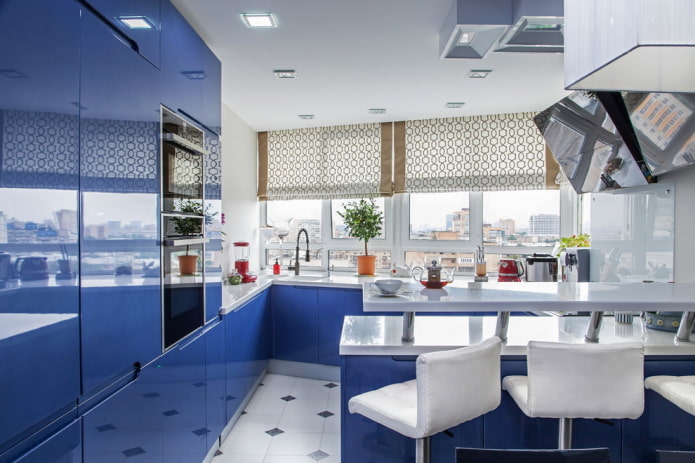
Blinds
Consist of many narrow or several wide slats that change their position with one turn. When closed, they provide good protection from the sun. Made of plastic or fabric that does not absorb dirt, so they are easy to care for.
We wrote about how to best decorate a window with blinds in a separate article.
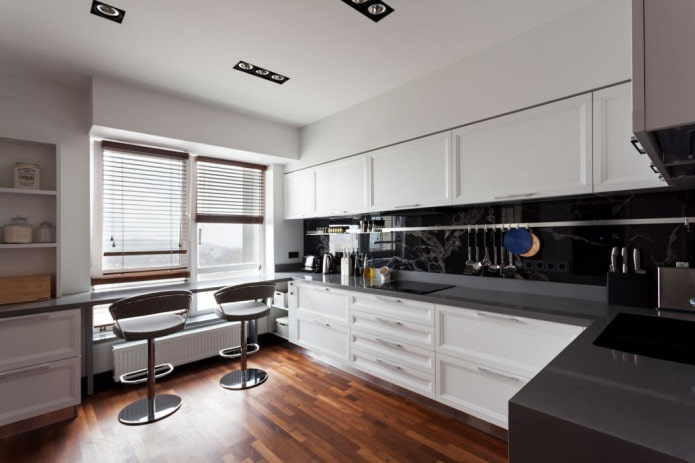
The photo shows practical horizontal blinds that fit perfectly into a modern style.
Pleated blinds
An excellent choice for a modern kitchen due to their moisture resistance and ease of care. They have a stylish, laconic design and at the same time transmit light perfectly. Pleated blinds can be easily installed near the cooking area or even the sink. Due to their versatility, pleated blinds are often used on windows with a balcony door.
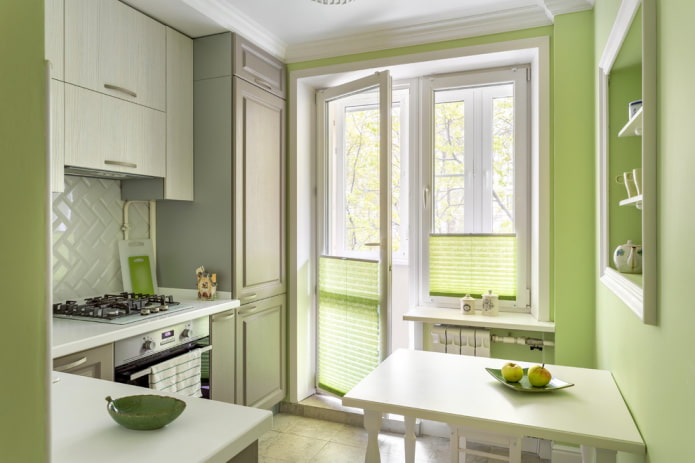
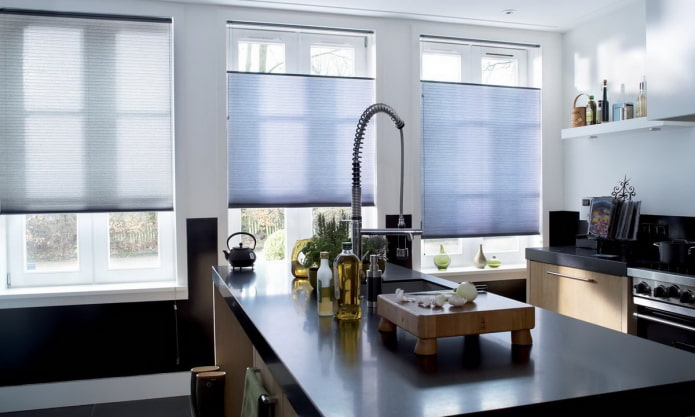
Roller blinds
Mobile, functional curtains for the kitchen, which fit perfectly into the minimalist style and are easy to adjust. When rolled up, they form a roll of fabric that does not take up much space. They can be mounted above the window opening or on the sash.
See more information about roller blinds here.
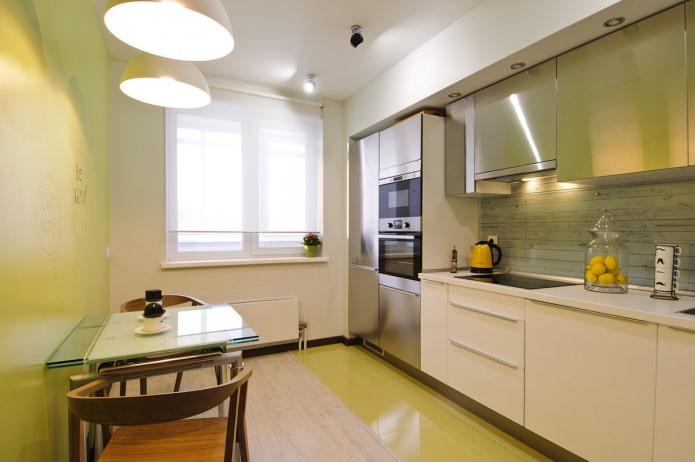
Thread blinds
They perform a decorative function, since they do not protect from the sun. Airy thread curtains look exclusive, decorate the kitchen and give scope for imagination, but some models can visually overload the room. The undoubted advantage of such unusual products is that the threads optically lengthen the room, as if raising the ceiling.
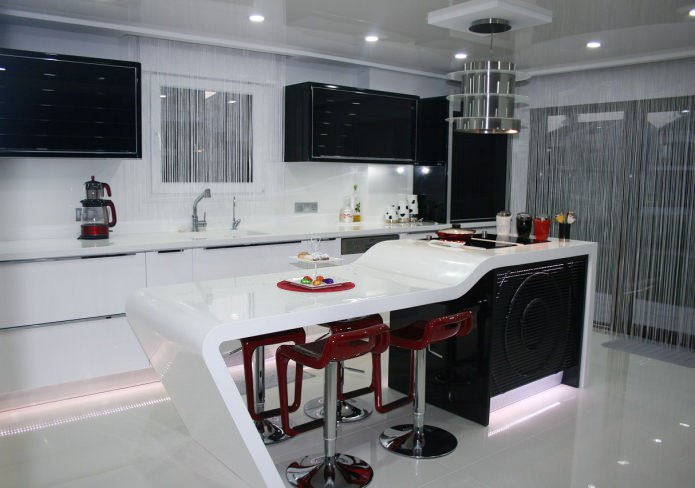
Now reading:
- How to effectively close pipes in the toilet? Top methods and 4 detailed instructions with photos.
- Lighting ideas for hallways and corridors: 55 photos, recommendations for choosing
- 70 photos of green wallpaper for your interior: fresh ideas for decorating an apartment
- Gray Kitchen: Over 50 Photos and the Best Interior Design Ideas
- Glass partitions for interior: advantages, disadvantages and ideas (34 photos)